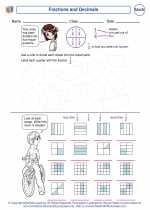Diagonals
In geometry, a diagonal is a line segment that connects two non-adjacent vertices of a polygon. Diagonals are often used to divide a polygon into triangles or to determine the number of triangles that can be formed within a polygon.
Properties of Diagonals
1. Number of Diagonals: The number of diagonals in a polygon can be calculated using the formula: D = n * (n - 3) / 2, where n represents the number of sides of the polygon.
2. Length of Diagonals: The length of a diagonal can be calculated using the distance formula or by applying the Pythagorean theorem, depending on the given information about the polygon.
Examples of Diagonals
1. In a square, there are two diagonals that bisect each other at right angles, dividing the square into four right-angled triangles.
2. In a hexagon, there are nine diagonals that can be drawn from any one vertex, dividing the hexagon into six triangles.
Application of Diagonals
Diagonals are used in various geometric problems and real-life applications, such as calculating the area of a polygon, determining the lengths of sides using diagonal properties, and in architectural and engineering designs.
Understanding the concept of diagonals is essential in geometry as it helps in analyzing the properties and relationships within polygons.
Overall, diagonals play a significant role in the study of polygons and are crucial for solving geometric problems.
.◂Math Worksheets and Study Guides Second Grade. Fractions Greater Than or Less Than 1/2

 Worksheet/Answer key
Worksheet/Answer key
 Worksheet/Answer key
Worksheet/Answer key
 Worksheet/Answer key
Worksheet/Answer key
 Worksheet/Answer key
Worksheet/Answer key
 Worksheet/Answer key
Worksheet/Answer key
 Vocabulary/Answer key
Vocabulary/Answer key
